Martini-Henry rifle - the most perfect "hardware"
("The Ballad of the West and the East", R. Kipling)
It must be assumed that the son of the colonel and the chief of the scouts shot Kamala from a revolver, that is why he missed. Shoot it from a carbine, the chances of getting into it would be much greater. True, the poem does not say how weapons enjoyed the commander of the reconnaissance detachment. But judging by the time, it could well be the Martin-Henry rifle (or carbine) of the system, with which the English soldiers at the end of the nineteenth century had to be fought in Africa and on the Afghan border ...
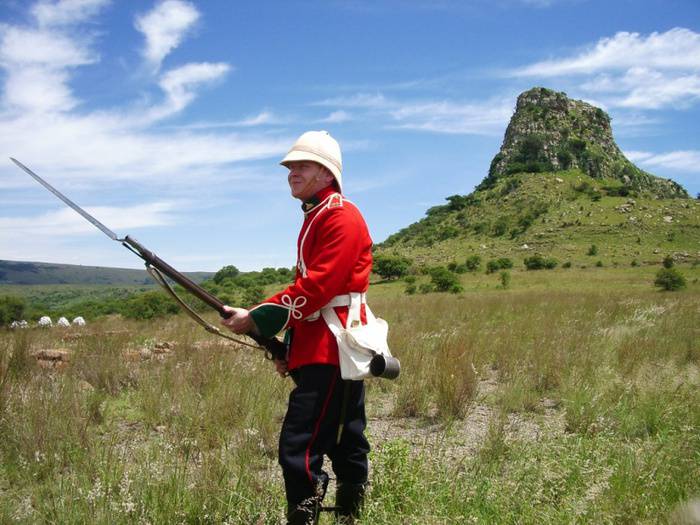
British soldier with a martini-henry rifle.
The problem of loading rifles with a muzzle was, in fact, never a problem. He put it upright, put the powder to sleep, drove the wad, then a bullet, then again the wad, or even lowered the bullet to Minie on the powder, sprinkled the powder on the shelf or put the capsule on the brand tube and put it on. But how can the rider or infantryman do all the same, but lying down? Here, everything was decided by loading from the treasury, but there were some technical problems here. Christian Sharps, who created a rifle and a carbine for cavalrymen with a vertical wedge sliding in grooves, was able to solve them in the simplest way from the technical point of view. A paper cartridge was inserted into the open breech, with a movement of a lever on the neck of the box, the bolt rose, with a sharp edge cut off the bottom of the cartridge and locked the "treasury". Through it was a hole from the brandtrubka, which was still wearing a cap. Then most of the Sharps rifles were remade for round-up or center-fire cartridges and metal sleeves.
Christopher Sharps rifle bolt scheme.
His rifles broke all records for reliability and accuracy, and for many years remained a favorite weapon and bison hunters and ... snipers, as they provided high accuracy of fire. And it was he, Sharps, who invented the mechanism, controlled by a lever arm, made in the form of a trigger guard back in 1851, while the famous Tyler Henry patented his mechanism even later than Christopher Spencer - the author of a seven-shot carbine, also with a gate controlled by such same lever. He invented it in 1860, and in fact the “Henry clip” only differs from it in form.
The second model of the carbard Maynard.
A very rare model of a cap carbine, which was in service with the army of the Southerners and produced at the plant in Downville in Virginia in 1862,
Whatever it was, and the system with a lever on the neck of the box, which was a continuation of the trigger guard, widely spread in the same United States during the internecine war between the North and the South. These were the systems of Sims, Stevens, Ballard, the famous "Winchester", and subsequently the rifle "Savage" (or "Savage").
Martini-Henry rifle rev.1871
Similarly, the lever, performed in concert with the trigger guard, was controlled by the bolt in the Henry Peabody rifle. This system appeared in the 1862 year, and the design of the gate part was such that the gate in it was movably fixed on the axis, which was above the location of the axial line of the bore. When the bracket went down and forward, the front part of the shutter went down. The breech at the same time opened, and the cartridge case was removed. It remained to invest in the barrel of a new cartridge, raise the lever and shoot. In the US, the Peabody system was liked, but the end of the Civil War put an end to his work. But his rifle was interested in Europe, and above all in Switzerland.
As you can see, the lever has a large shoulder and besides, it is conveniently located. On the receiver is clearly visible lever fuse. Other protruding parts on the receiver are missing!
There, the Swiss engineer Frédéric von Martini (1832 - 1897) enclosed the Peabody system (of which the external trigger, which needed to be cocked separately), was a serious flaw in one mechanism (still controlled by the lever behind the trigger guard), in which the trigger (representing spring-loaded firing pin) was located inside the gate. The Martini system came to the liking of the British army, which it was adopted in 1871 year.
Oval "medallion" with cutting - under the thumb, so as not to slide, being laid on the receiver.
This is how the Martini-Henry rifle, combining the Martini bolt and the polygonal rifling of the Scotsman Alexander Henry (1817 - 1895) from Edinburgh, was born. It all started with the fact that in England in 1864, they decided to create a committee to equip the army with a rifle that was loaded from the breech. It was clear that the easiest and cheapest way was to remake the existing stock of muzzle-loading rifles, and not to make a new weapon. As a result, the Snyder rifle with the designation “Snyder-Enfield Mk I” appeared in September 1866, which was a remake of the British Enfield MXXNX rifle. The reworking method was adopted very simple and therefore effective. 1853 mm was cut off from the breech breech and the receiver with the new Snyder bolt was screwed onto it, and all other parts of the rifle were left unchanged.
Aim.
However, Snyder’s rifle did not last long in service and was replaced by a Martini-Henry rifle already in 1871 — perhaps the most advanced rifle of that time. Like all other army rifles of those years, it was single-shot, had the traditional caliber 11,43-mm, length 1250 mm, barrel length 840 mm, weight without bayonet 3800 g, rate of fire 10 shots per minute. In the trunk were seven rifling Henry. The initial speed of the bullet was 411 m / s. The range of the aimed shot was 1188 m.
The muzzle of the barrel, ramrod and bayonet mounting.
The wooden parts of the rifle were made of quality American walnut wood. The forend had a length of 750 mm, a steel ramrod of length 806 mm was inserted into it. The butt had a steel back plate, sometimes smooth, sometimes with a diamond-shaped notch. It was attached with a latch for unlocking the bolt. The rifle bolt is swinging, driven by the lower arm. The drummer's platoon was carried out with the same lever, the empty cartridge was ejected from the rifle using an ejector. The sight was a step-frame, the front sight had a triangular cross-section.
Breech with an open shutter.
The position of the lever when the shutter is open.
The barrel was round, screwed into the receiver, and attached to the forearm by two sliding rings of steel. The trigger had a notch to increase the sensitivity of the finger, and a soft descent without free running. After a shot, the sleeve is thrown right-up-back when the shutter is lowered from lowering the lever. The butt is attached to the receiver with a long and strong clamping screw, the head of which is closed by a cast butt plate attached to the butt with two screws. The bayonet for the rifle was adopted triangular with valleys, very similar to the bayonet adopted in the Russian imperial army. In addition to the rifle, a cavalry carbine was produced, differing only in a smaller length. But the cartridges for him were slightly different. The fact is that because of the relatively small weight and large caliber, the recoil of the carbine was quite large. Therefore, cartridges with light bullets of shorter length were taken to the carbines, which had a red paper rather than white paper winding.
From left to right: .577 Snider-Enfield, .577 / 450 Martini-Henry from brass foil, .577 / 450 Peabody-Martini with a seamless brass sleeve and .303 British Mk VII (for Lee-Metford / L-rifle rifle for Mh.
Edward Boxer cartridges of various types with a brass, seamless bottle-shaped sleeve are suitable for the rifle. Cartridge length - 79,25 mm, weight of powder charge from black powder - 5,18 g, diameter of a lead cylindrical bullet - 11,35 mm, weight - 31,49 g. Like all bullets of that time, the bullet was shellless, with a rounded head, and wrapped in oiled paper for improve obturation, since it had a diameter smaller than the diameter of the bore.
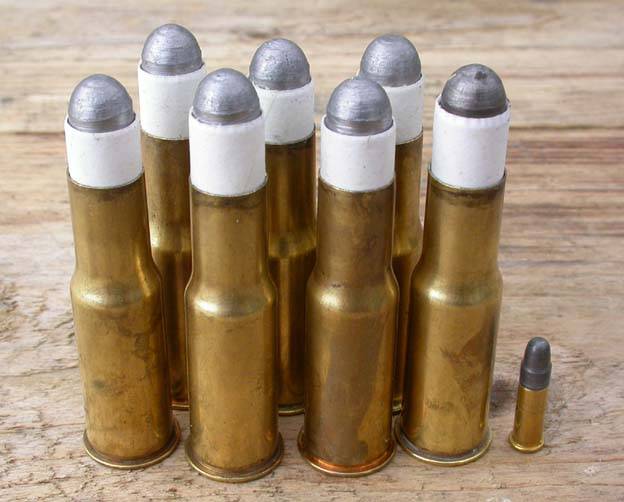
Martini-Henry cartridges made by crimping a straight sleeve from a Snyder .577 rifle.
Wrapping the bullet with oiled paper and using a batcher located behind the bullet helped to reduce friction and prevent lead-cutting of the rifling holes. When fired, the bullet was heard, its diameter increased, and she pressed the paper into the grooves. The best .45 Peabody-Martini cartridges were then produced in the USA, and they had higher rates than European ones.
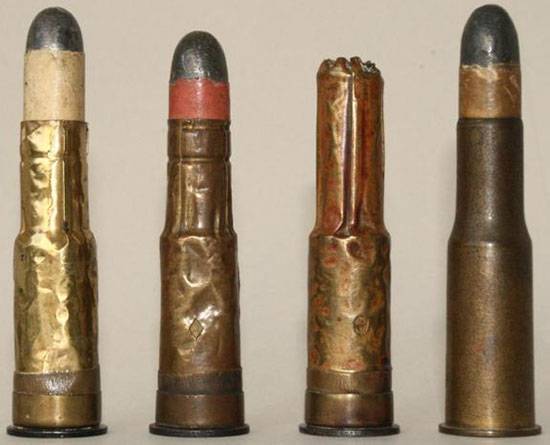
Cartridges .577 / .450. From left to right:
1. 1871 sample of the year with a foil sleeve. 2. For carbines. 3. Single. 4. Sample middle 1880-s with a seamless sleeve.
The rifle was produced several modifications Martini-Henry Mark I (1871-1876), Martini-Henry Mark II (1877-1881), Martini-Henry Mark III (1879-1888), Martini-Henry Mark IV (1888-1889).

The differences in modifications outwardly were very minor.
The Martini-Henry Mk II rifle, unlike the base model, had an improved trigger, a slightly different pillar, and a new ramrod. On Martini-Henry Mk III, the sight was again improved, and the cocking pointer was changed. Martini-Henry Mk IV received an elongated lever for recharging, which increased the reliability of the shutter at elevated temperature, the modified shape of the receiver, as well as a new butt and ramrod.
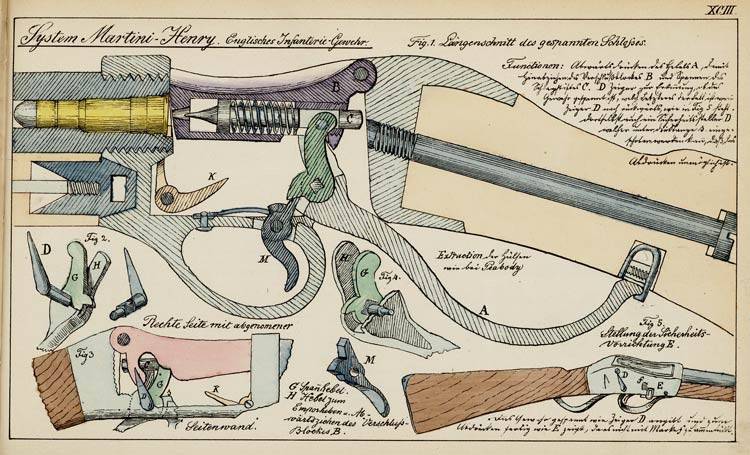
Martini-Henry rifle mechanism.
Note that Martini-Henry rifles in the English army were loved. They were able to demonstrate the rate of fire up to 40 rpm, in addition, it was very simple and extremely "resistant to war". By the standards of those years, it was possible to hit the target from a distance of 1000 yards (913 m), and good accuracy was achieved at a range of 500 yards.
Martini-Henry rifles, even being decommissioned, were manufactured in England before 1908, and even entered service for ... young scouts!
The popularity of the Martini-Henry system is also indicated by the fact that it was in service not only in Great Britain, but also in Turkey, in Romania, and also in Egypt. The Martini-Henry rifle served well in the wars that the British Empire waged in Africa, Afghanistan, on the northwestern border of India and against Maori in New Zealand.
I could not resist not imagining myself as a British colonialist somewhere in the wilds of "black Africa" and not holding this rifle in my hands. By the way, personal impressions of her treatment are the most positive. Lightweight, comfortable, there is not a single extra or protruding part. The killing rate of the bullet was, of course, very great. In short, the perfect single-shot "killing machine."
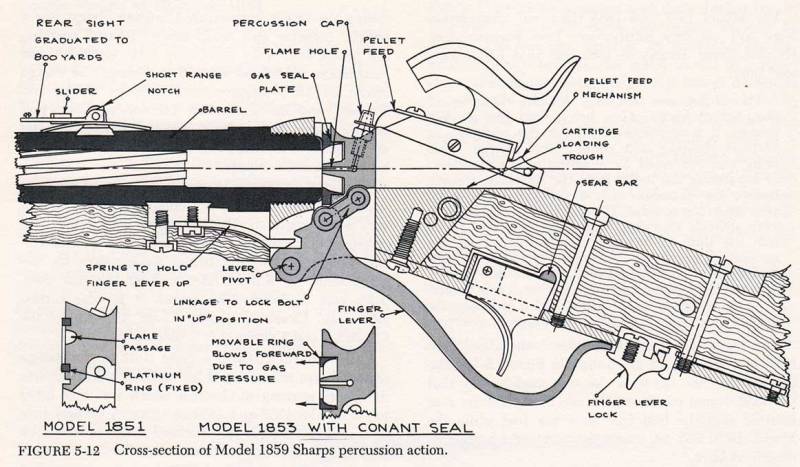
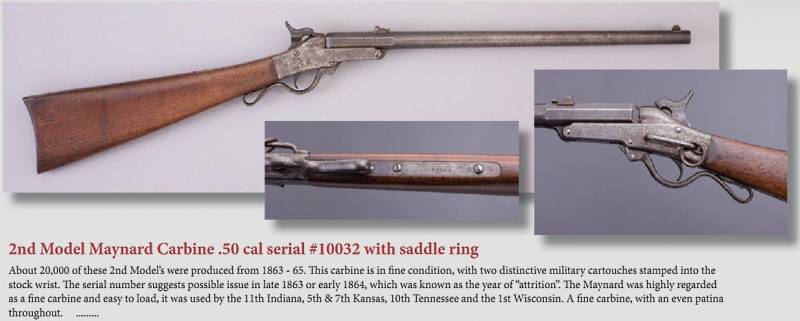
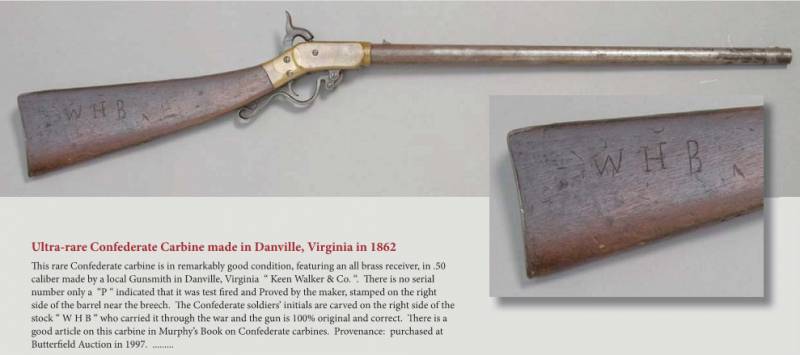
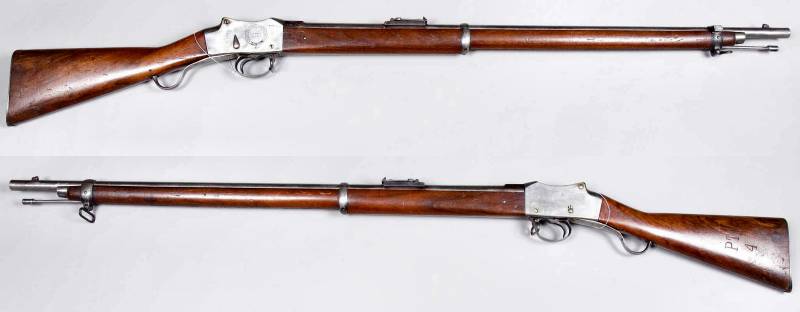
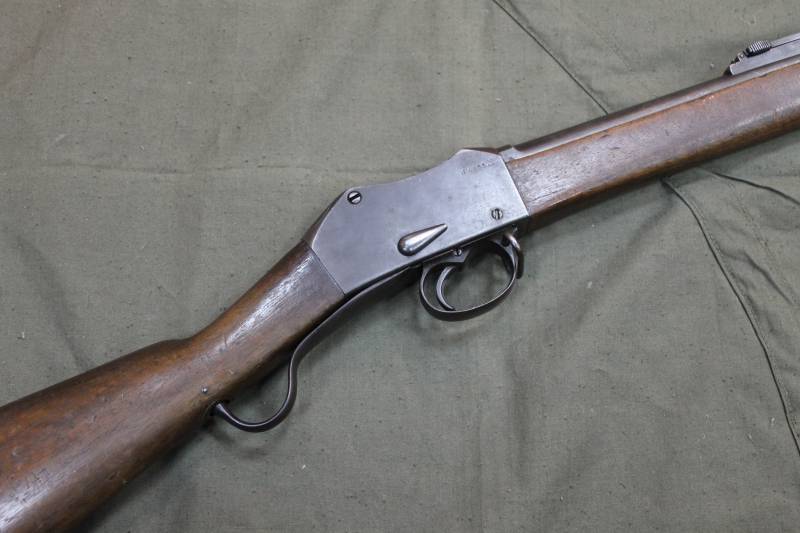
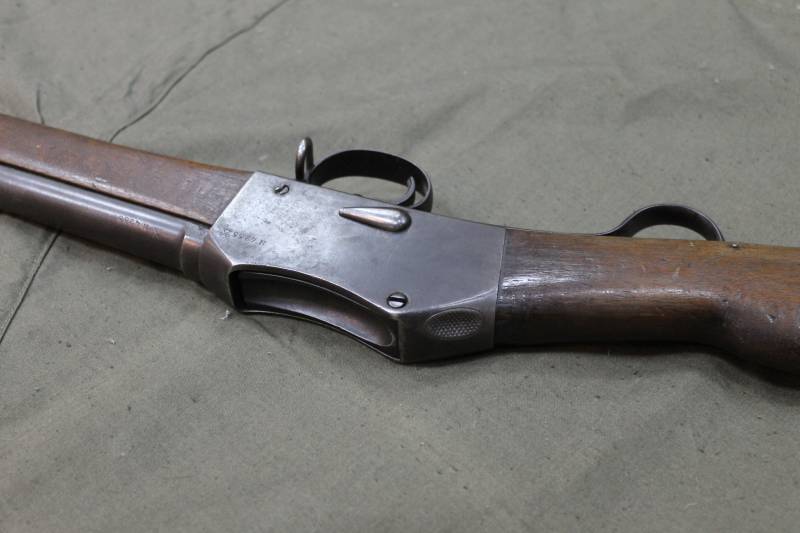
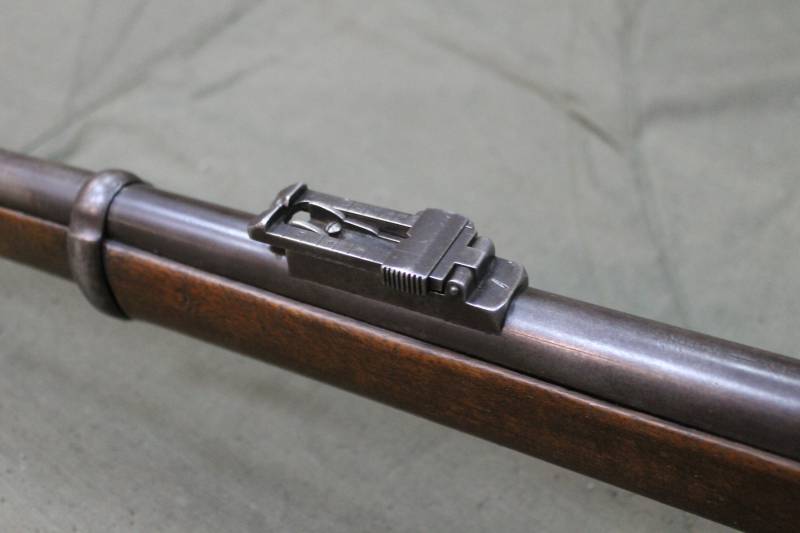
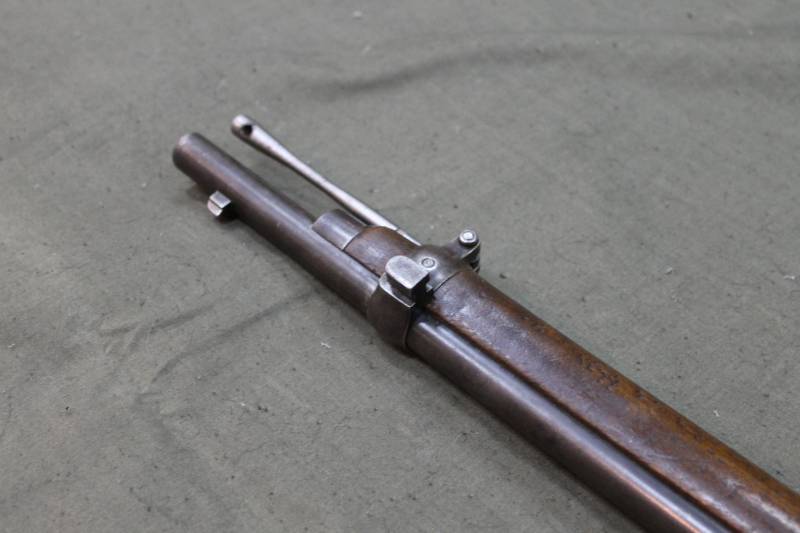
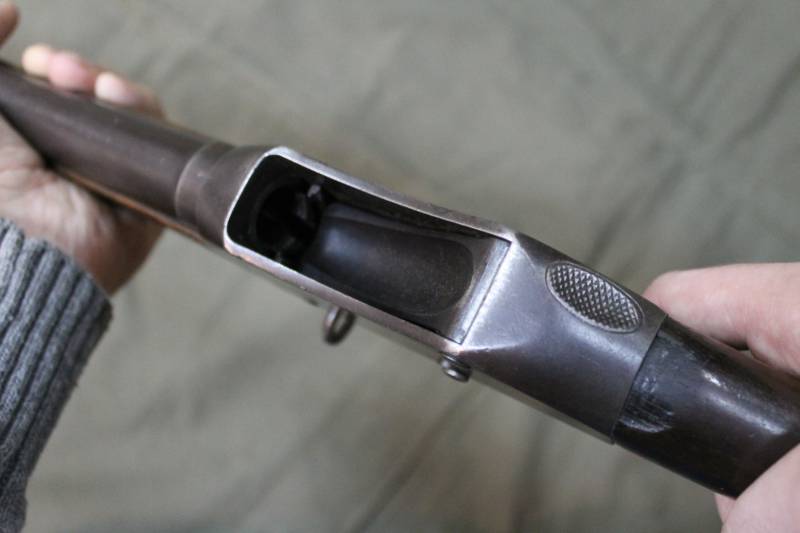
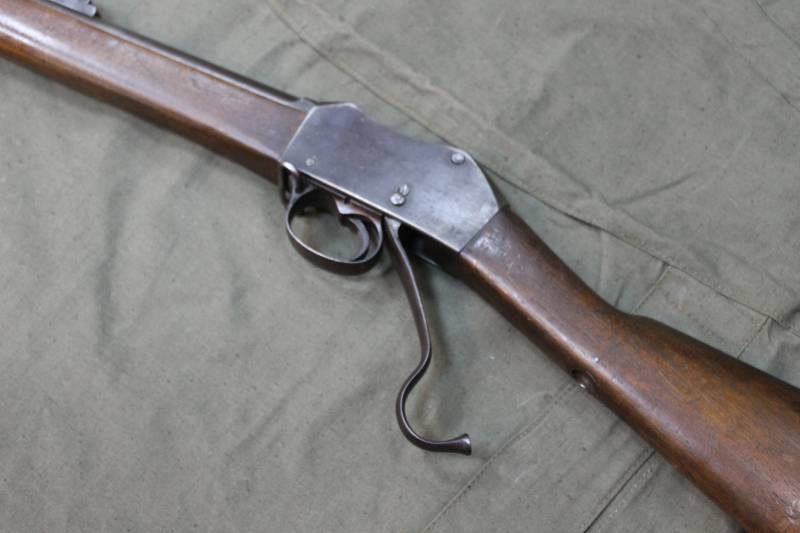
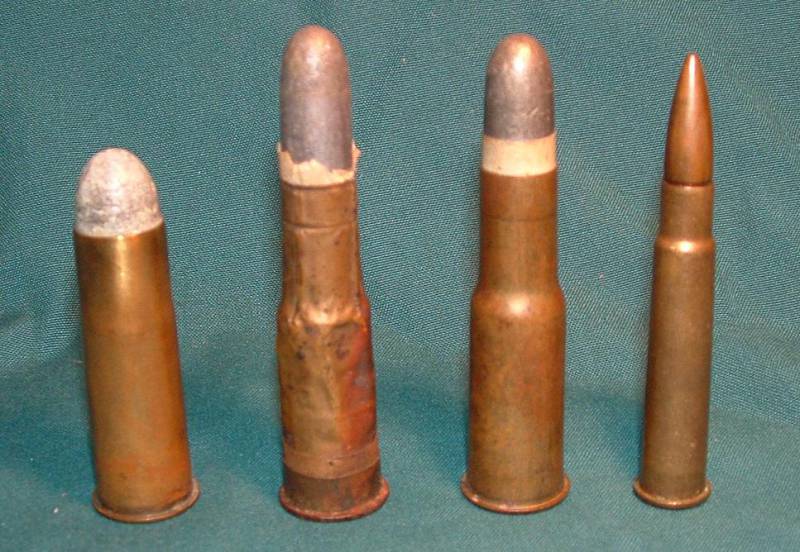
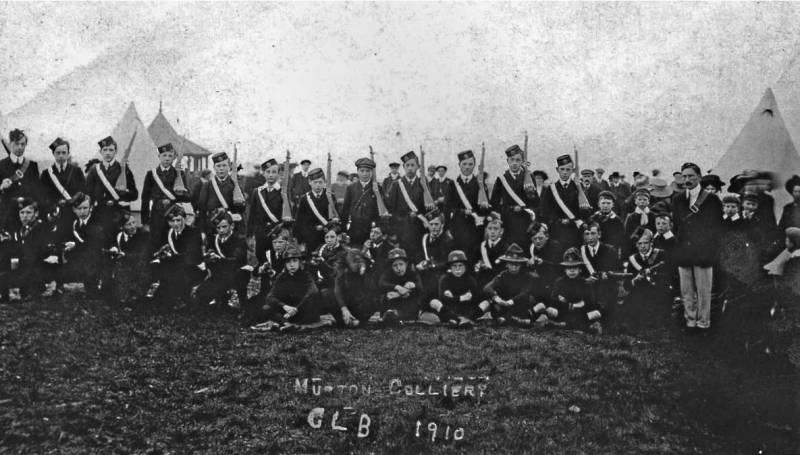
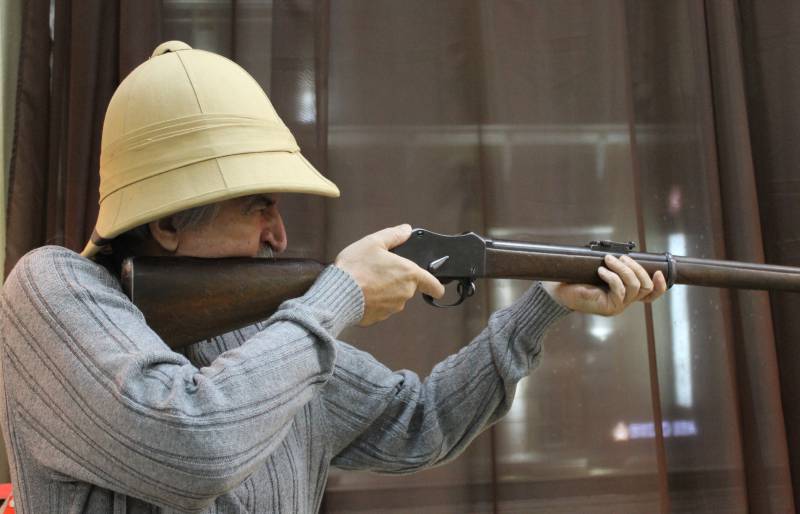
Information